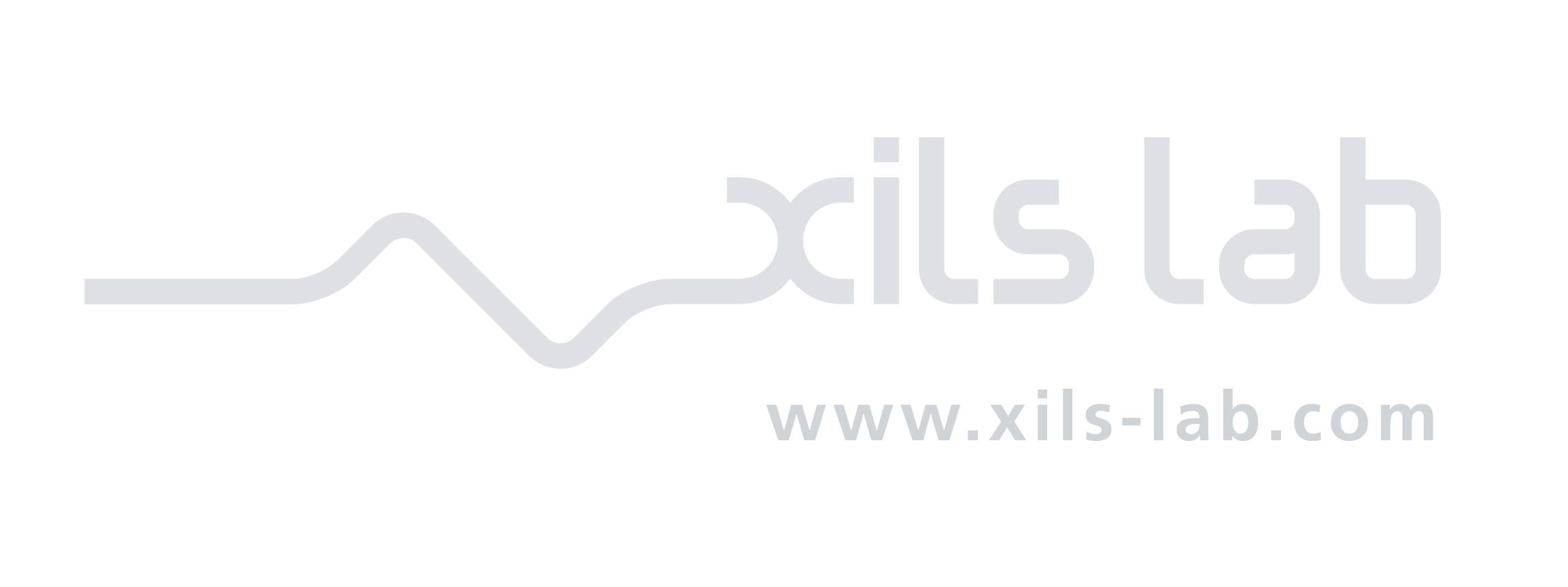Strings, Human Voices, 10 band Musical Vocoder What else …..
For many years, this wonderfully versatile machine has been used by some of the greatest names in the world of music and, since the advent of the virtual instrument plugin, devotees of the computer music world have been waiting longingly to have it as part of their sound arsenal. Now the wait is over!
The XILS V+ offers a Vintage 10 band Vocoder, Supreme Top Octave Divider based Strings and Human Voices, and offers sophisticated layering of these three elements.
After more than a year of intense modeling, deep in the basement of the Xils Laboratories, we now offer you this complete recreation of a legend. Its unique vintage vibe and classic looks can only be brought back to life by precisely emulating long forgotten techniques.
Video: Comparison with its conterpart legacy
Interesting Facts
-
The Top Octave Divider Oscillator provides a unique sound that no samples, or other simple synthesis techniques can reproduce. Emulating the T.O.D, without any aliasing on the whole frequency range, with its pitch and waveform modulation, was a real challenge, worthy of XILS-lab. We are very proud of this effort and offer it to you for your inspiration and enjoyment.
-
XILS-lab touch: The XILS V+ would not, however, be a real XILS-lab instrument if we did not add many functions and possibilities that were not present in the original machine, some giving access to its internal circuitry and parameters and some being totally new.
FEATURES
- A finely tweaked and emulated Top Octave Divider aliasing-free Oscillator, providing up to 49 voices of polyphony.
- Access to many parameters, which its hardware model kept secretly hidden under its roof.
- A Strings Section.
- A Human Voice Section.
- A 10 band Vocoder.
- A virtual keyboard (from which notes can be saved in your presets).
- An advanced Stereo Space effect.
- A simple but nice sounding Reverb effect.
- An analog-like resonant Phaser effect.
- Up to 6 free assignable modulation nodes, with up to 14 sources and 24 destinations.
- A special Glide function.
- A finely tweak analog-like pitch tracker.
- All parameters are MIDI controllable.
HIGHLIGHTS
Main Panel:

-
The main panel shows the same parameters as the original hardware making it easier to understand. Vocoder, Human Voice and Strings are all enabled by rocker switches, following the original “upper/lower” keyboard split.
This panel gives you all the possibilities found on the original hardware. -
A Bucket Brigade Delay based vibrato is provided for the Vocoder and the Human Voice and, the level of each section can be finely adjusted. The input of the Vocoder “direct Mic” can also be mixed before the Ensemble (Chorus).
-
An External Synth Input (using the side chain of the Plug-in) can be mixed with the internal sound generator to provide the Vocoder carrier.
MacOS
Latest Version: 1.6.1 BETA
Windows
Latest Version: 1.6.1 BETA
Request a Time Limited full license
The Time limited DEMO license:
-
Time limited to 15 days
-
Allowing running the full version with all its features
-
Only iLok protection allowed
Request your TIME LIMITED DEMO License
-
Mac OSX 10.13 and later (64bits, Intel and Apple Silicone): VST2.4, VST3, Audio Unit, AAX
-
Windows 7,8, 10 and 11 (64bits): VST2.4, VST3,AAX
Testimonials
Vocoder

The Vocoder panel allows you to adjust the analog-like pitch tracker, the attack and release time of the analyze algorithm, as well as some parameters of the filter banks.
You can also freeze the spectrum (the result can be saved in a preset or your project) and enable the special “water” effect (this is impossible to describe, so just try it!).
Mix/Arpeggiator:

The Mixer panel offers you the possibility to finely tune the internal sound generators.
From the relative level of the Male 8 and Male/Female 4 Human Voices, to the Ensemble dry/wet, you can also tweak the voices formants, the T.O.D wave form, as well as the Strings filter shape.
Furthermore, to avoid the only problem some users reported from the hardware, you can select a Polyphonic attack, either for the voices or for the strings.
The release, on the original machine, was reset with each new note played. This can be a very musical feature, for long release times, so that it doesn’t blur previous played chords. But, if you prefer standard release behaviour, you can select it on this panel by using the “Legacy” white rocker switch.
A built-in Arpeggiator is also provided, with a special feature to play “broken” arpeggios, providing more complex patterns.
More on the Top Octave Divider technology
Like the XILS V+, the XILS 505 is based on a Top Octave Divider Oscillator.
Under this strange name is hidden the heart of almost every electronic organ or strings machine built in the 70s/80s.
It’s a very clever concept to get 49 notes or more of polyphony without having to manage 49 or more stable oscillators, or the nightmare of having to tune them in those days!
Only one square oscillator, oscillating at a very high frequency (the “Top Octave”), has to be designed, and adjusted.
This oscillator is then “divided” to provide the 12 standard tempered frequencies over 4 (or more) octaves. These frequencies are then used to build the waveform of each of the 49 or more available notes.
As a matter of fact, all the notes are kept in phase, hence there is no drift between octaves (see the videos comparison between the hardware and the software)
Another benefit is that there is only one single tuning circuit for the whole keyboard: all the notes are modulated in the same manner when you use the envelope Glide (So it’s a ‘special Glide’ here again).
This is a limitation that gives the very special, and recognisable, effect that was used by many electronic music artists back in the day.
Two other consequences:
Firstly, the attack is done after the summation of the notes. This means that after a note has been played the following notes will get the same level reached by the first note.
In other words, polyphonic attacks were not possible with the original machine, but XILS-lab, thanks to the computer world, offers you the best of both worlds: monophonic OR polyphonic attacks. That’s also called “paraphonic”!
Secondly, all the filter settings are also done after the summation of the notes. The filters (Strings, Human Voices, Basses) are therefore monophonic, which lead to a whole new, or in this case quite old, set of playing techniques, with unique sonic results that can’t be replicated on later polyphonic analog synthesizers, which had one filter per voice.
On a side note: 49 voices of polyphony wouldn’t be possible, even on todays’ computers, if the 49 specific filters had to be polyphonic too (human voices are done with up to 14 filters, strings involves 7 filters, so up to 1029 filters would have to run simultaneously!!).
So, as with the original machine, the XILS V+ has monophonic filters.
Analog Modeled Effects
-
The XILS V+ is equipped with vintage Reverb and Phaser units, the reverb being part of the True Stereo Engine.
-
These effects are simple, but have a strong character, and sound unique. And, if you use them, it’s just impossible to replace them with any other external effects.
True Stereo Engine:

-
the dry part of the Strings, Vocals and Vocoder, the wet part of the ensemble can be placed in the stereo field, thanks to the True Stereo Engine.
-
The build-in reverb which follow offers you incomparable results.
Total Control:
-
You can assign any Midi CC to any synthesis parameter to fine tune some midi parts, or achieve the most precise automation.
-
You’ll also get some additional parameters that make full sense when playing music, like the possibility of controlling the speed of all Attack parameters with velocity, or the Decay/Release of all envelopes.
This is the key to expressive Keys or Brass/Strings patches, but you can use this to design outrageous expressive leads as well. -
Last but not least, the XILS V+ provides a wide range of modulation options (over 14 sources and 24 destinations), plus a monophonic LFO and a polyphonic envelope that can be used as modulation sources.




